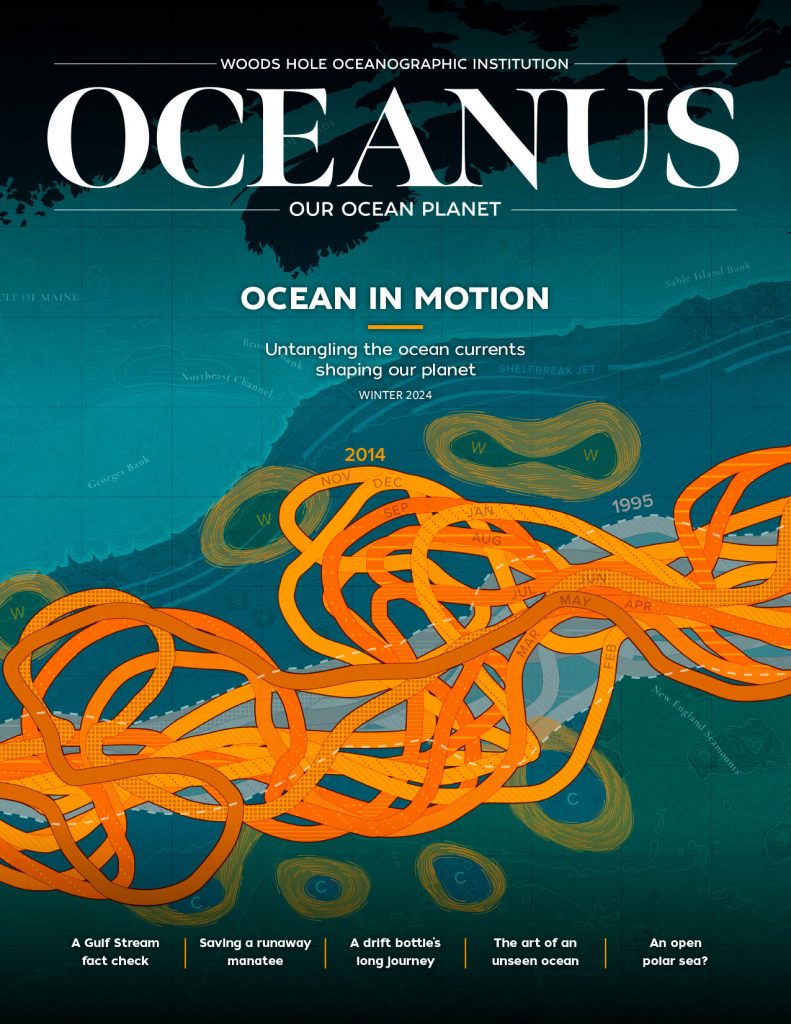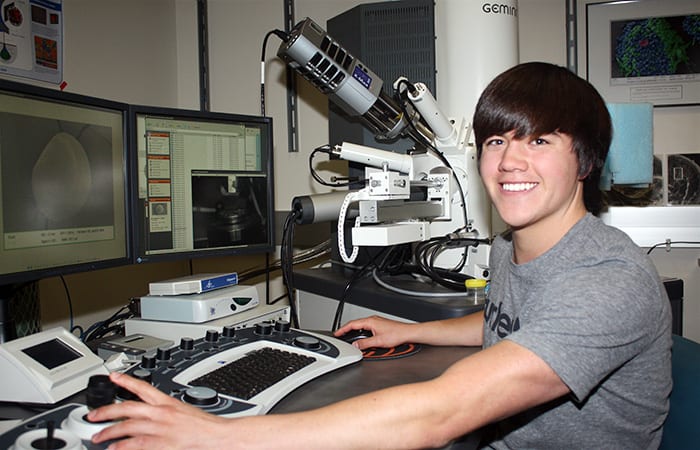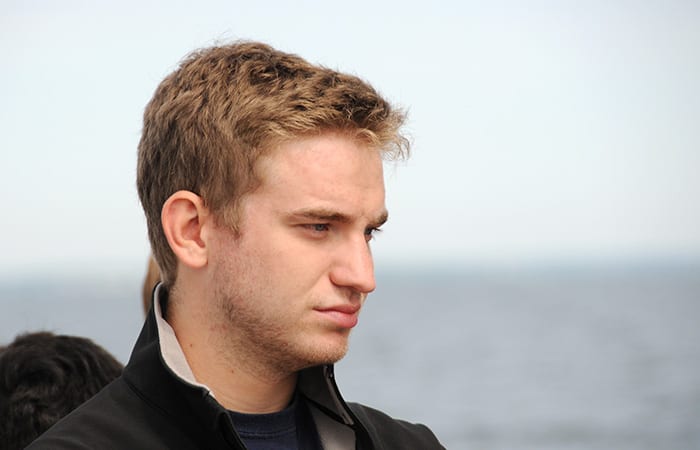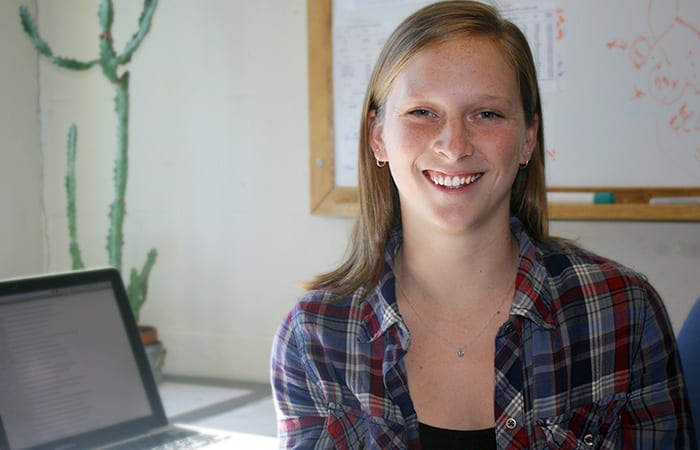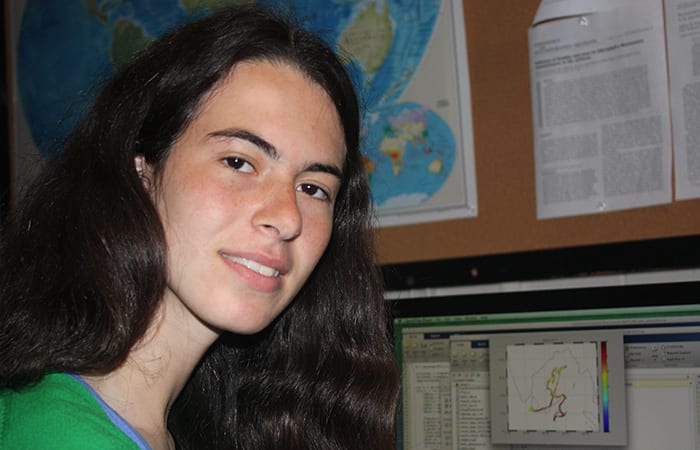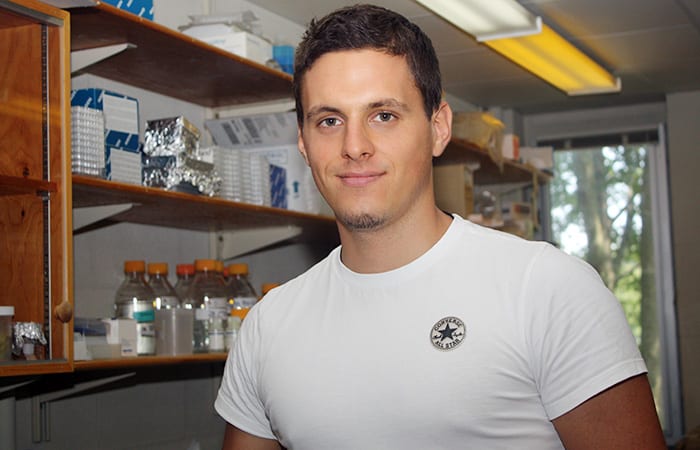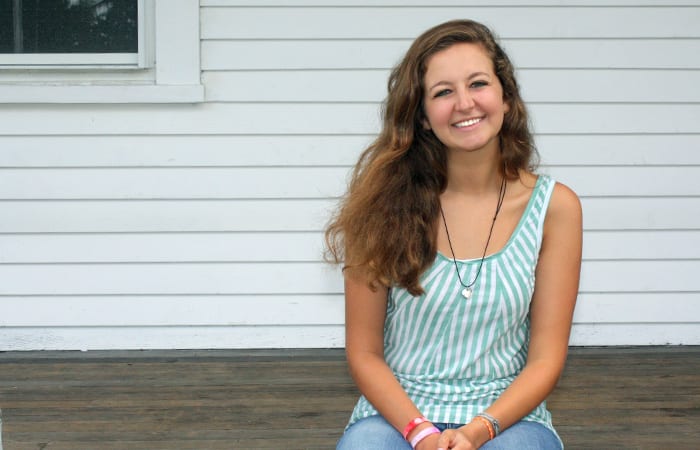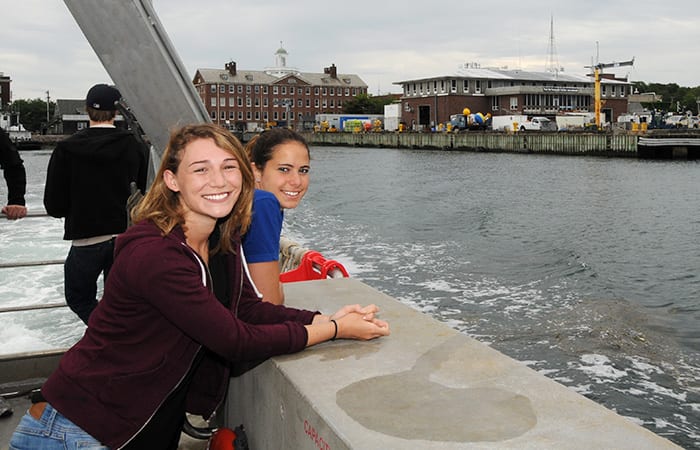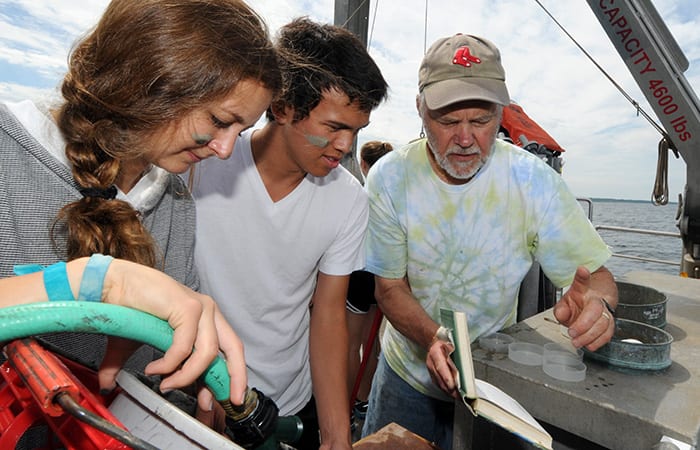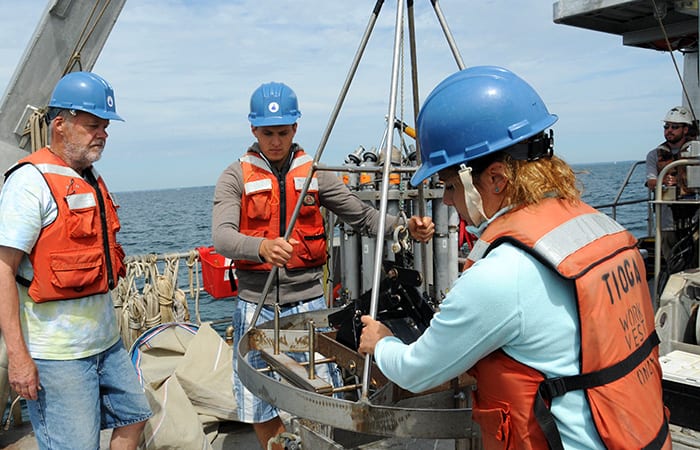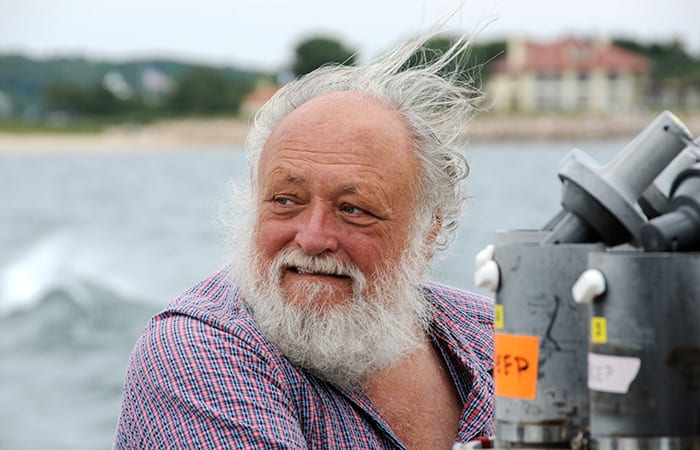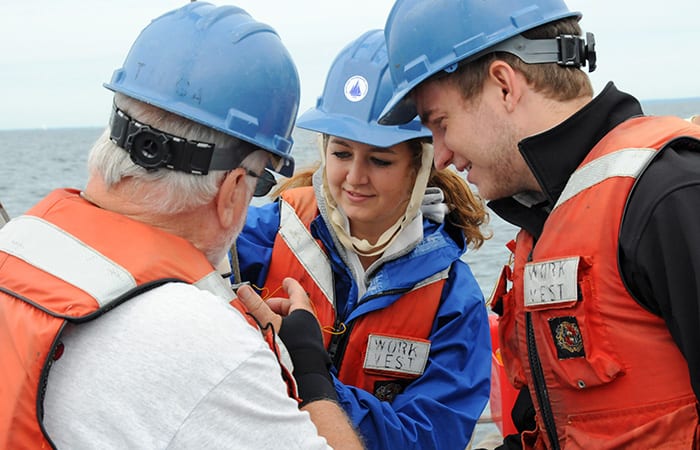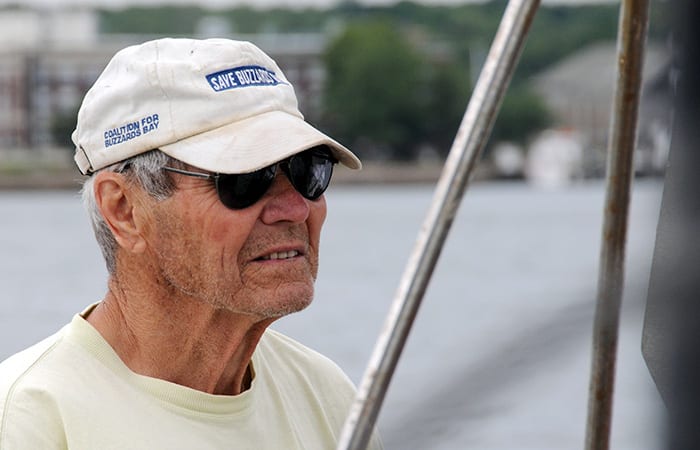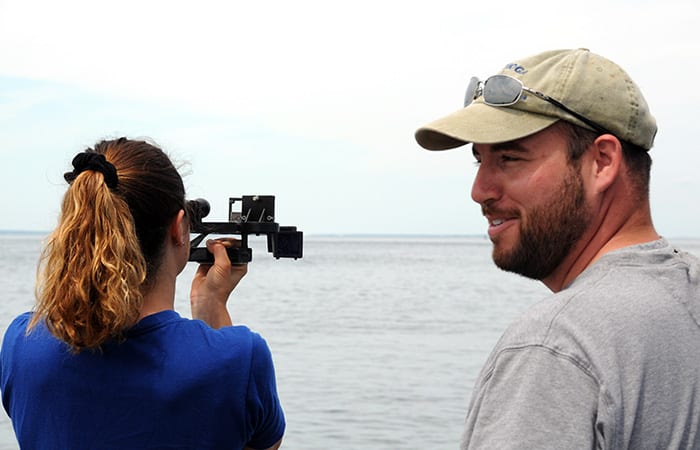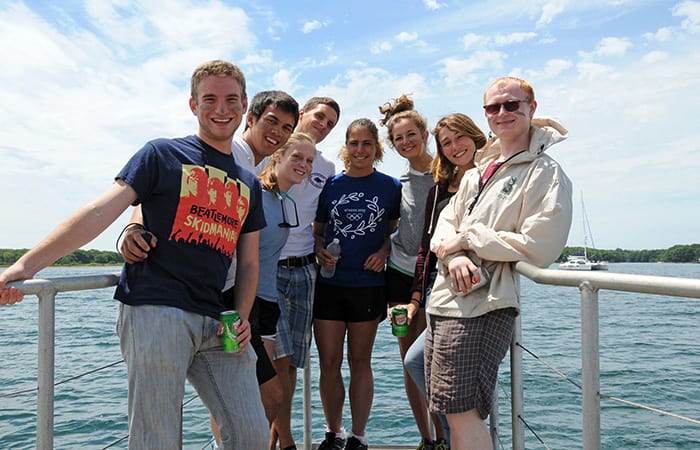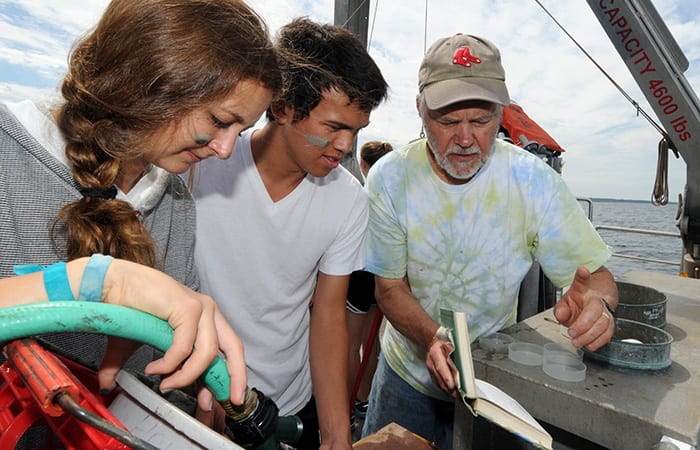
A Summer of Science by the Sea, 2014 (Part I)
Summer Student Fellows dive into ocean research
It’s a science major’s dream job: live on Cape Cod for the summer and do ocean research with top-notch scientists as a Summer Student Fellow at Woods Hole Oceanographic Institution (WHOI).
This year, as in every summer since 1959, undergraduates from around the world came to WHOI to learn about ocean science and conduct research under the guidance of WHOI scientists. Members of the 2014 group hail from the United States, Croatia, Italy, England, Trinidad, Germany, Canada, and China. Their projects here spanned a wide range of topics, from the genetics of barnacles along the East Coast of the United States to the effects of the monsoon on salinity in the Bay of Bengal.
And this year, another undergraduate, Allison Gage, joined us at Oceanus to delve into the world of science writing. As part of her internship, Gage profiled several of the Summer Student Fellows.
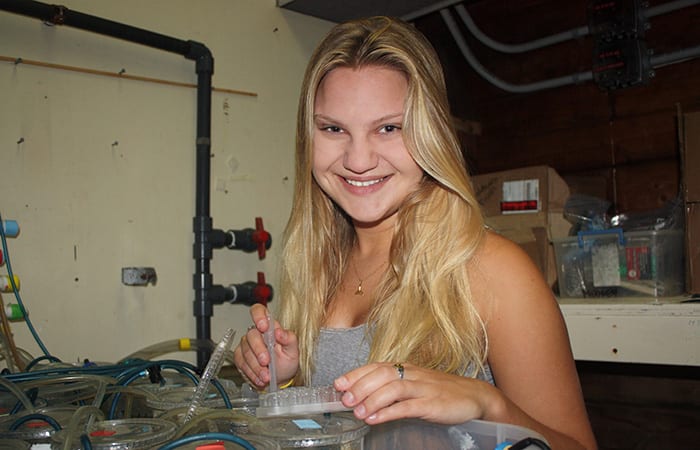 Swimming in Low-pH Seas
Swimming in Low-pH Seas
Doriane Weiler
Researchers knew that squid raised in acidified water developed abnormal balance organs. To find out whether the young squid could still balance and swim normally, Summer Student Fellow Doriane Weiler mapped their movements.
 Scallops Under Stress
Scallops Under Stress
Cailan Sugano
Like other marine species, scallops face multiple climate change-related problems. Summer Student Fellow Cailan Sugano studied how scallops respond to acidification and lack of food—and whether extra food can help them resist damage due to more acidic seawater.
 Surface Waters Go Their Own Way
Surface Waters Go Their Own Way
Sam Kastner
Summer Student Fellow Sam Kastner found that at a given spot in the ocean, water at the surface may not be moving the same direction or speed as water deeper down—which can make predicting the path of nutrients or pollutants very challenging.
 It’s Hard to Kill a Killifish
It’s Hard to Kill a Killifish
Lily Helfrich
Summer Student Fellow Lily Helfrich is using a new molecular tool, microRNA analysis, to explore why some killifish are able to thrive in waters heavily contaminated with PCBs.
 Sea Science in the Space Age
Sea Science in the Space Age
Mara Freilich
South Asian monsoons bring huge amounts of fresh water into the Bay of Bengal. Summer Student Fellow Mara Freilich used huge data sets from satellites to show how and where the salinity of the Bay changes as a result.
 On the Trail of an Invader
On the Trail of an Invader
Filip Buksa
To find out when and how fast a small gray barnacle came to New England waters, WHOI researchers turn to forensic techniques.
 Recovering After a Hurricane
Recovering After a Hurricane
Maya Becker
Summer Student Fellow Maya Becker studied how vulnerable four coastal communities were to major hurricanes—and how fast they recovered.
The 2014 Summer Student Fellowships were funded by the National Science Foundation, the U.S. Geological Survey-WHOI Cooperative Agreement, The John M. Alden Fund, The Arthur Vining Davis Foundations Fund for Summer Student Fellows, The Christopher Haebler Frantz Fund, The AOP&E and G&G Alumni Fund, The Carl and Pancha Peterson Endowed Fund for Support of Summer Student Fellows, The Lawrason Riggs, III Memorial Fund, The Richard Vanstone Fund, The C. Russell Feldman Fund, The William D. Grant Fund, The Seth Sprague Educational and Charitable Foundation Fund, The Jake Hornor Fund, The Noel B. McLean Fund,The Cooperative Institute for the North Atlantic Region, and The Virginia Walker Smith Fund.
From the Series
Slideshow
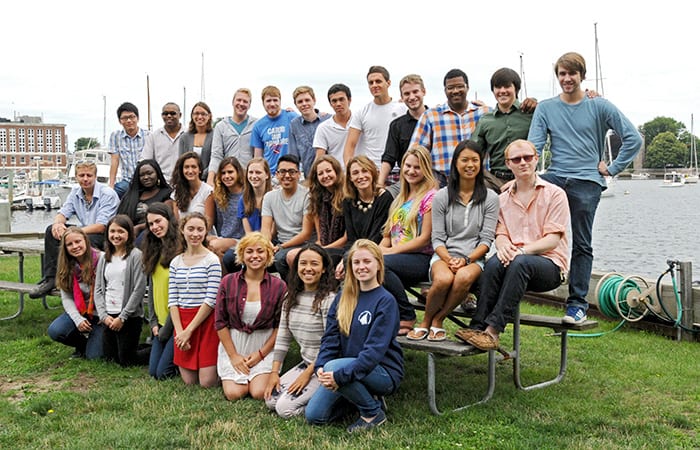
Slideshow
- The 2014 Summer Student Fellows hailed from Canada, China, Croatia, Germany, Italy, Trinidad, the United Kingdom, and the United States. Front row (l-r): Joleen Heiderich, Elena Perry, Mara Freilich, Maria Ordovas-Montanes, Alexis Wood, Gaby De La Cruz Tello, Samantha Emmert. Middle row: Robert Forney, Amber Emerson, Jessica Sandoval, Caterina Brighi, Lily Helfrich, Manny Hernandez, Maya Becker, Helena Pryer, Doriane Weiler, Emily Chua, Billy Shinevar. Back row: Wenzhong Wang, Andre Price, Jennifer Frame, Jim Stylinski, Ian Jones, Will Oestreich, Jacob Forsyth, Filip Buksa, Sam Kastner, Ernest Quintana, Cailan Sugano, Karter Harmon. Not pictured: Mary Munro, Jennifer Karolewski. (Photo by Jayne Doucette, Woods Hole Oceanographic Institution)
- One of the highlights of the Summer Student Fellowship program is a day trip on the WHOI research vessel Tioga to gain a little hands-on experience with sampling and navigation equipment. Here, Fellows Helena Pryer and Caterina Brighi enjoy the view as Tioga pulls away from the WHOI dock. (Photo by Jayne Doucette, Woods Hole Oceanographic Institution)
- Summer Student Fellows Maya Becker and Jacob Forsyth and instructor Hovey Clifford consult a field guide to identify sediment animals collected during a short cruise on Buzzards Bay aboard the WHOI research vessel Tioga. Clifford is one of four WHOI employees and retirees who join the cruise each summer "to give the students a flavor of what is involved in planning, preparing, and eventually going to sea to obtain samples for research." (Photo by Jayne Doucette, Woods Hole Oceanographic Institution)
- Volunteer Hovey Clifford (left) watches as Summer Student Fellows Filip Buksa and Caterina Brighi prepare a "clamshell" sediment sampler for deployment. When the sampler reaches the seafloor, its jaws close shut to grab a load of sediment. (Photo by Jayne Doucette, Woods Hole Oceanographic Institution)
- Jim Doutt, a research associate at WHOI, instructed the Summer Student Fellows in the use of a CTD, which measures temperature, depth, and conductivity (which correlates with salinity) of the water. Visible at right are Niskin bottles, part of a CTD "rosette" used to capture samples of water at various depths. (Photo by Jayne Doucette, Woods Hole Oceanographic Institution)
- Long-time WHOI research associate Bruce Tripp, now retired, instructs Summer Student Fellows Maya Becker and Sam Kastner in the preparation of Niskin bottles, water-sampling instruments they later deployed over the side of R/V Tioga. (Photo by Jayne Doucette, Woods Hole Oceanographic Institution)
- Emeritus oceanographer George Hampson showed the Summer Student Fellows how to measure the amount of oxygen in a water sample using the Winkler technique, which was developed more than 100 years ago and which played a crucial role in determining oxygen levels in the Gulf of Mexico following the Deepwater Horizon oil spill. (Photo by Jayne Doucette, Woods Hole Oceanographic Institution)
- Ian Hanley, first mate of WHOI research vessel Tioga, showed Summer Student Fellow Caterina Brighi how to use a sextant to determine the boat's position. (Photo by Jayne Doucette, Woods Hole Oceanographic Institution)
- Taking a bow at the bow: Summer Student Fellows Sam Kastner, Jacob Forsyth, Lily Helfrich, Filip Buksa, Caterina Brighi, Maya Becker, Helena Pryer, and Billy Shinevar. (Photo by Jayne Doucette, Woods Hole Oceanographic Institution)
